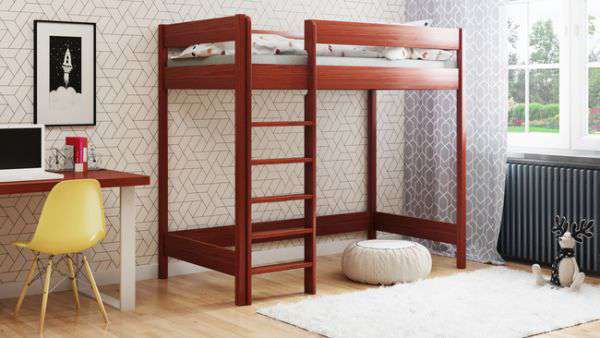Expert Bunk Bed Crafter
Queen Captain Bed Plans - How To Plan And Set up A Sturdy Structure

To center the slot, make one pass, then flip the board end for end and make a second pass. Plywood or other sheet stock could warp, especially if it's stored surface to surface. Drill pilot and countersink holes and apply a dab of construction adhesive at each joint. Drip food coloring into the bottom of your rain gauge next time you empty it out. Oral syringes are also perfect for injecting wood glue into narrow crevices for furniture repairs. Trace arc, getting as deep into rabbet as possible. You'll (https://woodcraftdiagrams.com/diy-simple-twin-bed-frame-plans-blueprints) also need assistance to get the beams in place and clamped while you drill for the threaded rod.
Dog kennels plans need to consider how long your pet would be outside. Even though this project isn't complicated, it's still going to take you at least 40 hours to build. After spreading a thin layer of sand over the concrete, lay the patio stones in place. One solution is to opt for a less concentrated sealer. The idea here is just to soften the sharp edge made by the trimmer. Simply set the depth of rip and you're ready to rout. Mark depth on the drill with a bright-colored erasable marker. A jigsaw blade often bends one way or other, leaving a cut that's not quite vertical.
Tap legs to get the pipe seated. Also, boring holes in a small workpiece is a snap-just clamp piece to fence at any angle and drill hole. That way, you could easily spot and clean off smudges. That's because the workpiece--not router--is (visit here) now in the middle. Now just saw through the sandwich using a carbide blade. Screw one strip to the wall and the other to back of the shelf or cabinet. Scratches are hard to see when they run parallel to grain. You'll probably have to tighten parts slightly in a few months after the lumber dries out. When you choose boards, don't worry about knots, scratches or gouges.
Crosscut the top pieces, breadboard ends, stretchers, and legs. Assemble the partitions on a flat surface as shown in Photo 2 and then set them aside for the glue to dry. We used disposable plastic cups as mixing containers. Every square box has to be absolutely square-that is, its height must be exactly the same as its width. I had to cut down a big elm tree in my yard last year because of Dutch elm disease. Now it works great for tracing cutting lines on rough boards and laying out screw hole positions along cabinet edges. Or, you could do both at once with a countersink bit.
Just remember to put two collars on the cable, between each pair of shelves, as you thread cable through the holes. Place your chisel along the end craft and use it as a guide to remove waste material. After you round over edges, clean up any saw kerfs and burn marks and soften any sharp edges with sandpaper. Layout bottom pieces and the first course of front, back and two side pieces as shown. Connect the sticks with short pins or hot-melt glue. If you use different-size containers, adjust distance between the uprights so the 2x2s would catch lip of container.
A battery with charger is available from electronics and hobby stores. Master it and you'll be amazed at how well your knives perform and how much more fun food prep, carving, slicing and peeling can be. In our area, Lowe's and contractor lumberyards carry Douglas fir. Figure on spending 10 to 12 hours over the course of a week to complete the project. You don't have to wait for it to dry completely. Insert the rungs and measure the spread of the posts. Be sure to go counterclockwise with the router. Leave trellis frame on a flat surface until adhesive hardens, then attach the lattice to rungs.
Stand up the arbor exactly where you want it and mark locations of the postholes. They're good for smaller work and casual use. Open cabinet doors and take a look at bottom of cabinet box. The lumber plug will stick in saw and pop out the other side. This is ideal for bibliophiles who need lots of storage. Adjust feet to level it with the trough. They can't tip because top shelf is screwed to the wall. Layout and construction start at one end of boardwalk and proceed to other. Don't worry about getting surface smooth because later you'll be putting a layer of sand over hardened concrete to level the patio pavers.
Or you could extend the length by building additional partitions and shelves. Place a second board-marked side up-over your glued board and align edges. Cut six boards to get all of the pieces for build. This will prevent the possibility of injury from a protruding shank.
